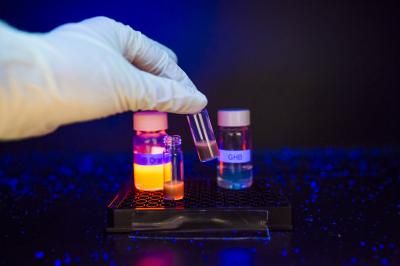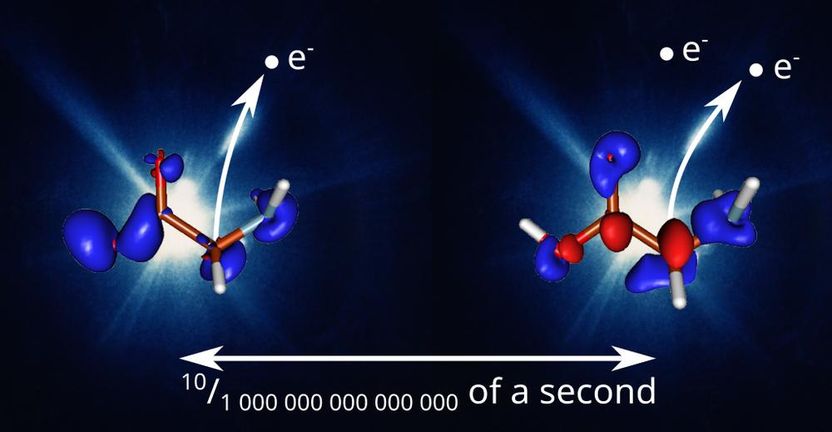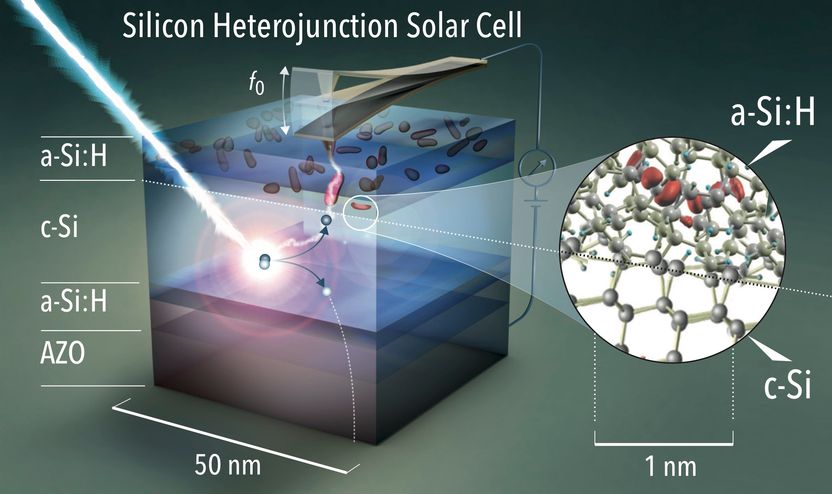The Dye with the Pumpkin Cuff
Complexation with a large cuff-shaped molecule stabilizes rhodamine dye fluorescence
When irradiated, fluorescent dyes emit light at a different wavelength; for scientists and engineers, these dyes are extremely important aides, as active media in dye lasers, as markers for biomolecules in diagnostics, or for the detection of single molecules. A team from the International University of Bremen has now succeeded in significantly raising the stability of a rhodamine dye by placing it into a kind of molecular cuff.
Most attempts to improve the properties of rhodamines, one of the most important classes of fluorescent dyes, have not been very successful. A new additive now makes it possible. The wonder-molecule used by Werner Nau and Jyoti Mohanty is cucurbituril. The unusual sounding name is derived from cucurbitaceae, the botanical name for the pumpkin family of plants, because the structure of the molecule is like an open-ended pumpkin that has been hollowed out.
When cucurbituril is added to a solution of rhodamine, one dye molecule slips into the cavity of each of the little "pumpkins". Safely ensconced in this way, the rhodamine displays an amazing stability; even highly diluted solutions of the stabilized rhodamine can be stored for a long time without loss of fluorescence due to adsorption of the dye on the surface of the storage flask. In concentrated solutions, like those used for dye lasers, the main problem is aggregation of the dye molecules with each other. The pumpkin hinders this "stickyness" of the rhodamine molecules like a wrapper. Another problem is bleaching of the dye by longer or more intensive irradiation. This often makes it impossible to observe biological samples stained with fluorescence dyes under the fluorescence microscope for extended periods. The pumpkin provides the necessary protection and because the cuff is transparent like a ball of glass, the dye can capture just as many light particles as before. In contrast to many previous materials used for stabilization, cucurbituril in no way affects the fluorescence of rhodamine.
It is noteworthy that the fluorescence lifetime of the enclosed rhodamine molecules is extended. This is the time that passes before the light energy absorbed by a dye molecule is given off as fluorescence. Various investigative techniques depend on this value, because it allows conclusions to be drawn about the environment of the dye molecule. A higher value raises the contrast in fluorescence microscopy.
Topics
Organizations
Other news from the department science

Get the chemical industry in your inbox
By submitting this form you agree that LUMITOS AG will send you the newsletter(s) selected above by email. Your data will not be passed on to third parties. Your data will be stored and processed in accordance with our data protection regulations. LUMITOS may contact you by email for the purpose of advertising or market and opinion surveys. You can revoke your consent at any time without giving reasons to LUMITOS AG, Ernst-Augustin-Str. 2, 12489 Berlin, Germany or by e-mail at revoke@lumitos.com with effect for the future. In addition, each email contains a link to unsubscribe from the corresponding newsletter.





























































